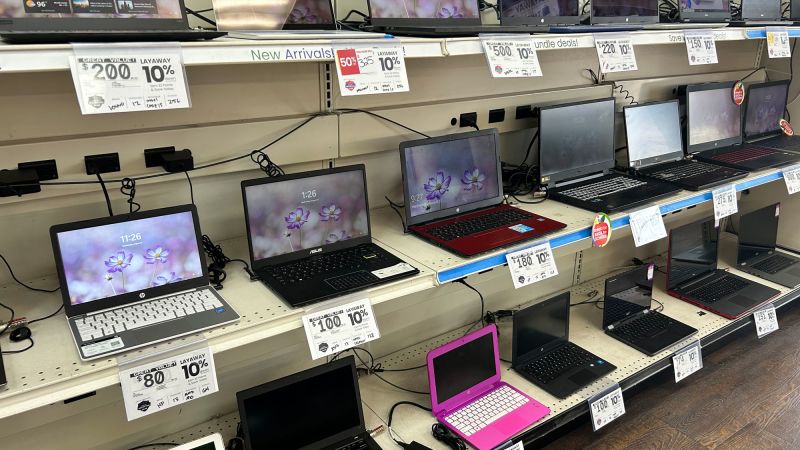In recent years, back-to-school shopping among American families has undergone significant changes. Fueled by economic uncertainty and the looming threat of tariffs that could increase prices on essential items, parents are beginning their shopping expeditions earlier than in past years. As families grapple with tighter budgets, an increasing number are turning to less conventional sources for their back-to-school needs—most notably pawn shops.
According to a survey conducted by the National Retail Federation, families are anticipated to spend approximately 2% less on back-to-school items this year compared to the previous year. This statistic reflects a growing trend among American consumers who are becoming more budget-conscious and less willing to pay inflated prices at major retailers. Pawn shop owners, like Les Gold, who runs American Jewelry and Loan in New York City, have reported a surge in business as consumers seek to save money. Gold notes, “With the way the economy is right now, people realize that they can go to a pawn shop anywhere in the United States, and they can save tremendous amounts of money.”
Pawn shops prove to be a veritable feast for those on the hunt for back-to-school essentials. These shops offer a diverse range of items—from sneakers and laptops to musical instruments and mini-refrigerators—all at prices that are often significantly lower than those found at traditional retailers. For families looking to save, this provides a unique opportunity. Gold further comments on the challenges families face in affording necessary items: “People are struggling more, and that’s why more people are looking for better deals,” pointing out that even when funds are low, parents remain committed to providing children with essential tools for education, such as laptops.
Compounding these financial pressures are the tariffs that have recently impacted the prices of key back-to-school items. The United States imports a substantial portion of its clothing and footwear from countries like China, Vietnam, and Cambodia, which are currently subjected to tariffs exceeding 30%. For instance, data from the Consumer Price Index reveals that the price of shoes increased by 1.4% from the previous month, while the cost of apparel rose by 0.1%. This surge in costs has pushed many shoppers toward pawn shops, where items can be priced as much as 50% lower than at major retailers, according to EZPawn, a nationwide chain of 500 pawn shops.
Renita Parker, a regional director for EZPawn with oversight of 88 stores in Houston, shared insights regarding this trend, stating that many new customers are discovering their stores due to the combination of reasonable prices and the anxiety associated with retail shopping in the current economic climate. Interestingly, a staggering 98% of the items sold in pawn shops are pre-owned, which makes them unaffected by the recent tariff increases. Parker confirms this by stating, “Tariffs are not a factor here at our company simply because our customers are the ones that supply us with the merchandise.”
As families engage in smart shopping, they are also pawning off valuable gold items to generate extra cash, further illustrating the desperation in the current economy. Nick Fulton, managing partner at USA Pawn, which operates six locations in central Mississippi, reports seeing a marked increase in the sale of gold jewelry, often broken or minimal, as families look to fund necessities such as school supplies. This surge correlates with the rising price of gold, which has surged approximately 27% since January, largely spurred by the financial uncertainties arising from tariffs and other economic pressures.
The increasing foot traffic in pawn shops could serve as an alarming economic indicator. Business owners like Gold express concern when they see higher customer volumes, suggesting that it often reflects a more significant economic struggle for ordinary Americans. He comments that “pawn shops help these people survive,” illustrating their critical role in providing alternative financial solutions.
Moreover, the average customer at a pawn shop often lacks access to conventional loans or credit lines. The National Pawnbrokers Association has highlighted that many of these customers are burdened by debt, with total credit card debt in the United States remaining at $1.2 trillion in the second quarter, mirroring figures from the previous year. In this light, Gold paints a stark picture of the Real Economy, stating, “In reality, the economy isn’t as good for my clientele; they’re struggling,” emphasizing that for his customers, survival often means living paycheck to paycheck, and for many, it’s a daily battle.












